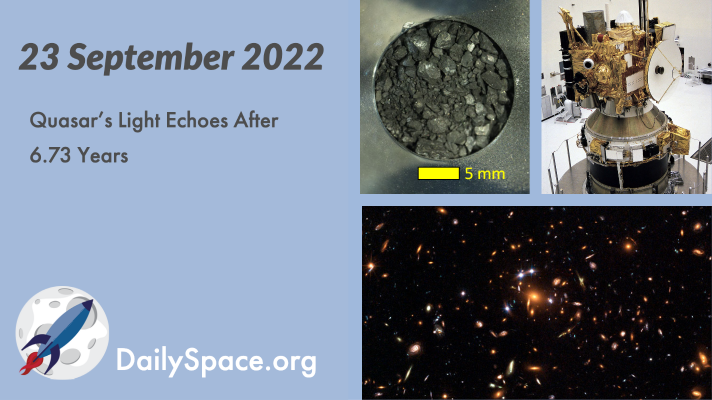
Sep 24, 2022 | Asteroids, Daily Space, DART, Europa, Fast Radio Bursts, JAXA, Jupiter, Mars, Quasar, Random Space Fact, Space History
Astronomers using the 1.2-meter Whipple Observatory to follow the brightness of a lensed galaxy for 14.5 years have calculated that the time delay between light arriving along the shortest and farthest paths is 6.73 years. Plus, DART, Hayabusa2, Juno, fast radio bursts, and This Week in Space History, we look back at NASA’s 1990s attempts to reach Mars.
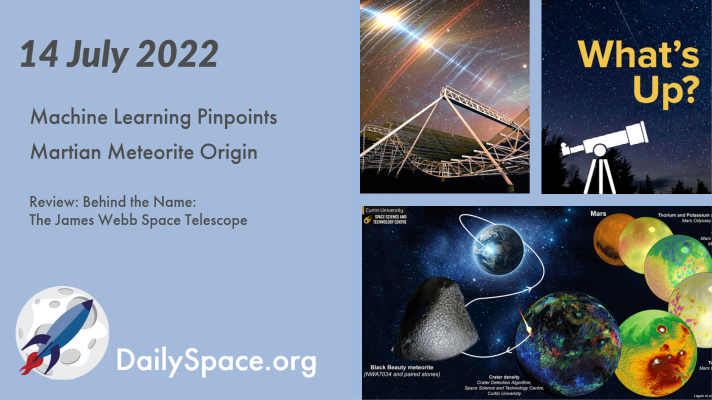
Jul 15, 2022 | Crewed Space, Daily Space, Earth, Fast Radio Bursts, Jupiter, Mars, Review, Science, Sky Watching, Spacecraft, SpaceX, Supernovae
Using layers of data from a variety of Martian missions, researchers have developed a machine learning algorithm that identified the actual crater from which a particular Martian meteorite originated. Plus, a radio heartbeat, and our last What’s Up and review of the season.
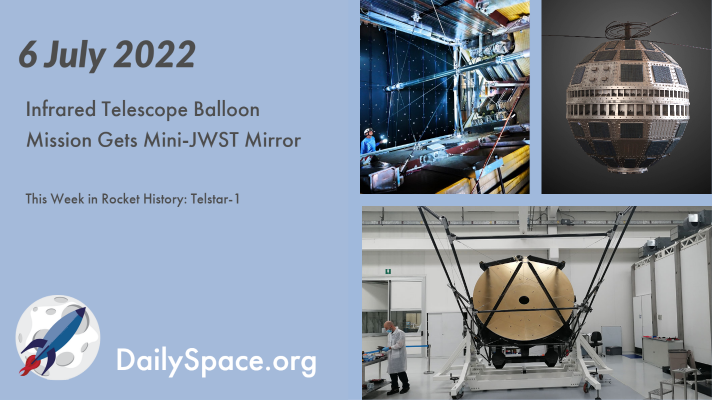
Jul 7, 2022 | Astrobiology, Daily Space, Earth, Fast Radio Bursts, JWST, Our Solar System, Physics, Quantum, Science, Space History, Spacecraft
While waiting for the launch and commissioning of JWST, engineers designed an infrared telescope with a 2.5-meter mirror that will fly onboard a large research balloon to nearly 40 kilometers in altitude. Plus, fast radio bursts, robotic ammonites, and this week in rocket history we look back at Telstar-1.
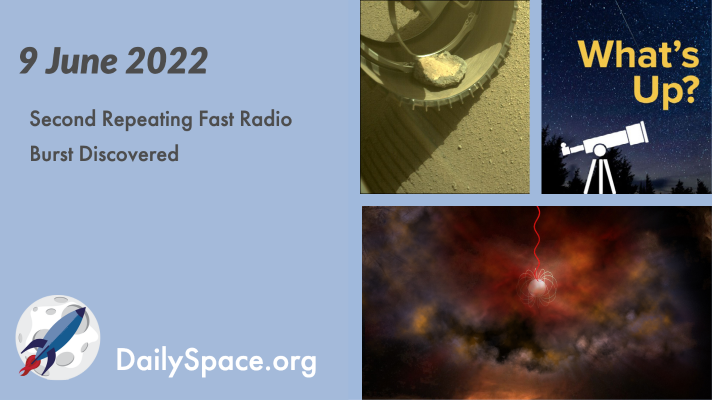
Jun 10, 2022 | Daily Space, Fast Radio Bursts, JWST, Mars, Neutron Stars / Pulsars, Perseverance, Rockets, Sky Watching, Space Policy, Spacecraft, SpaceX, Starlink
A second repeating fast radio burst was detected in 2019 by China’s FAST observatory and confirmed in 2020 by the Very Large Array. This latest discovery raises the possibility that there are two different types of FRBs. Plus, a SpaceX commercial launch, mission updates, neutron stars, and this week’s What’s Up.
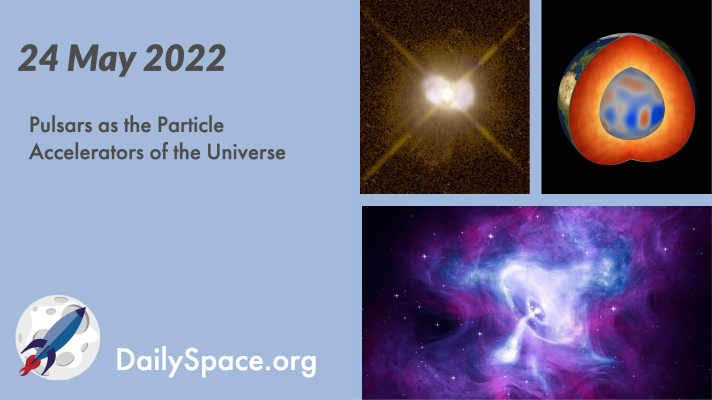
May 25, 2022 | Daily Space, Earth, Fast Radio Bursts, Galaxies, Lucy, Neutron Stars / Pulsars, Planetary Nebulae, Spacecraft, The Sun
Fast, strong magnetic winds caused by quickly rotating pulsars may be accelerating particles like electrons to extremely high-energy states and creating gamma-ray photons in their wake. Plus, missions close to home, large and distant objects, some pretty Hubble photos, and laser simulations of fast radio bursts.
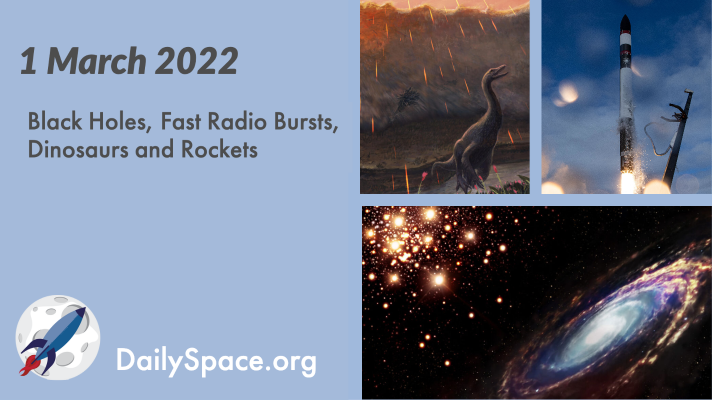
Mar 2, 2022 | Asteroids, Black Holes (Stellar), Crewed Space, Daily Space, Earth, Fast Radio Bursts, Neutron Stars / Pulsars, Rocket Lab, Rockets, Space China, SpaceX, Starlink, Supermassive Black Holes
As we return from our mini-break, we bring you some highlights of stories that happened while we were away, including black holes spiraling toward each other, the possible origin of a fast radio burst, and more information on the demise of the dinosaurs. Plus, Erik Madaus brings us updates on quite a few rocket launches.








 We record most shows live, on Twitch. Follow us today to get alerts when we go live.
We record most shows live, on Twitch. Follow us today to get alerts when we go live.